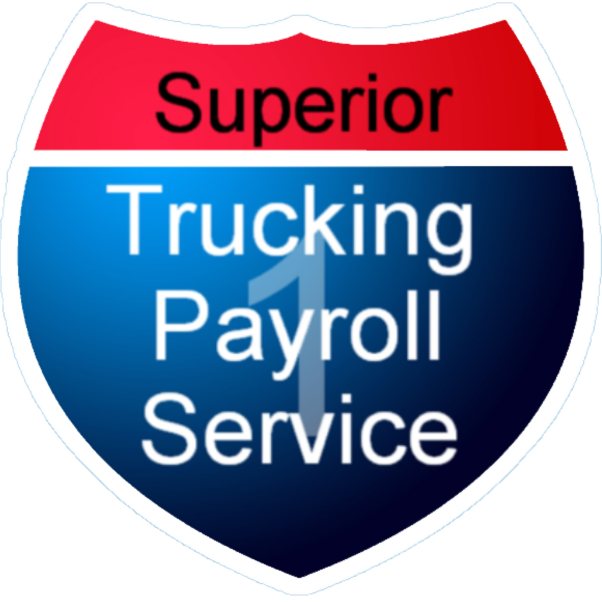Struggling with high driver turnover and unclear payment structures? Many trucking companies face these challenges, which can lead to unhappy drivers, unsafe driving practices, and higher operational costs. Deciding how to pay your drivers—whether by the mile, by the hour, or by the load—isn’t just about managing expenses. It’s about ensuring fair compensation, keeping drivers satisfied, and maintaining efficiency and safety on the road.
In this article, we’ll break down the three most common ways to pay truck drivers: by the mile, by the hour, and by the load. With years of experience working with trucking companies, we understand the complexities of these pay structures and the impact they have on your business.
By the end of this article, you’ll confidently choose the best pay method to boost driver satisfaction and operational efficiency, helping your trucking company succeed.

How Choosing the Right Pay Method Impacts Your Trucking Company
How you pay your truck drivers isn’t just about numbers. It affects your drivers’ satisfaction, how safe they feel on the road, and even your company’s bottom line.
A good pay structure can help you:
- Keep Drivers happy and reduce turnover.
- Improve safety by encouraging drivers to take their time and avoid speeding.
- Control costs while making sure your drivers are fairly compensated.
It’s important to think about these factors when deciding how to pay your drivers. Let’s look at each payment method more closely.
Paying Truck Drivers by the Mile: Benefits and Drawbacks
Paying drivers by the mile is one of the most common ways to compensate truckers. However, it’s important to understand that there are two main ways to calculate mileage pay: actual miles driven and practical miles.
-
Actual miles driven:
These are the exact miles recorded by the truck’s odometer, which include every mile traveled, whether it’s part of the route or a detour.
-
Practical miles:
These are calculated using mapping programs like PCMiler. Practical miles represent the most direct or efficient route between the pickup and delivery points and may not account for extra miles from detours or traffic.
The method you choose to calculate mileage pay can significantly affect how much your drivers earn. Now, let’s look at the general pros and cons of paying drivers by the mile.
Benefits of Paying by the Mile
-
Simple to calculate:
It’s easy to figure out how much a driver should be paid based on the distance they’ve driven.
-
Gives drivers control:
Drivers may feel like they have control over their pay since they can increase earnings by driving more miles.
-
Encourages efficiency:
Some drivers may try to complete routes faster to cover more miles in a shorter time.
Drawbacks of Paying by the Mile
-
External factors affect pay:
Traffic, weather, and road conditions can slow drivers down, causing them to lose money even though they’re still working.
-
Safety concerns:
Drivers might feel pressured to drive faster, which could increase the risk of accidents.
-
Unpaid downtime:
If drivers are stuck waiting for a load or dealing with delays, they aren’t getting paid for that time.
While paying drivers by the mile is a popular option, it isn’t the only way. Another common method—especially for local or short-haul jobs—is paying drivers by the hour, which has its own set of advantages and challenges.
Paying Truck Drivers by the Hour: Pros and Cons
Another option is to pay drivers by the hour, similar to how many other jobs work. This method is more common for local or short-haul jobs, where trips are shorter, and traffic or delays can have a bigger impact on work.
Advantages of Paying by the Hour
-
Fair compensation for time worked:
Drivers get paid for all the hours they work, not just the miles they drive. This can be fairer when drivers face long waits or heavy traffic.
-
Encourages safer driving:
Since drivers are paid for their time, there’s less pressure to rush, which can improve safety.
-
Better for local work:
Hourly pay works well for short trips or yard work, where the number of miles driven isn’t a good measure of work done.
Disadvantages of Paying by the Hour
-
Tracking hours can be tricky:
If drivers take breaks or face unexpected delays, it can be hard to track exactly how much time should be counted for pay.
-
Disagreements may arise:
There could be arguments over how hours are recorded, especially if a driver feels their time isn’t being fairly tracked.
-
Less motivation for efficiency:
Drivers might not feel the need to finish routes quickly since their pay isn’t tied to the number of miles they drive.
While hourly pay offers a fair way to compensate drivers for their time, some companies choose to pay by the load, where drivers earn based on the specific cargo they’re hauling. This method adds a new layer of incentives and challenges for both drivers and companies.
Paying Truck Drivers by the Load: What to Consider
The third common method is paying truck drivers by the load. In this case, drivers are paid based on the specific load they are transporting. These loads are often paid as a percentage of the load’s value or based on the complexity of the job.
Advantages of Paying by the Load
-
Incentivizes drivers to take more loads:
Drivers know how much they’ll earn for each load, which can encourage them to take more loads.
-
Reflects job difficulty:
Pay can vary based on the weight, distance, or special needs of the load (e.g., temperature control or high-value cargo).
-
Clear expectations:
Drivers have a set amount they’ll earn for each load, so there are no surprises.
Disadvantages of Paying by the Load
-
Safety concerns:
Like paying by the mile, this method might push drivers to take on more loads or heavier loads, which could increase safety risks on the road.
-
Inconsistent earnings:
Since load availability can vary, drivers might not have steady work, making their income unpredictable.
-
Pressure to prioritize high-paying loads:
Drivers might prefer to take higher-paying loads, leaving less urgent or lower-paying jobs unfilled.
With different payment methods—by the mile, by the hour, or by the load—each offering unique advantages and challenges, the question remains: Which pay method is the best fit for your trucking business? Let’s explore the key factors to consider when making this decision.
How to Choose the Best Pay Method for Your Trucking Company
There’s no one-size-fits-all answer to which pay method is best for truck drivers. The right choice depends on the type of freight you move and your business model.
However, there are some key factors you should consider:
-
Type of freight:
Are you handling long-haul trips or local deliveries? Long-haul drivers prefer to be paid by the mile, while local drivers benefit more from hourly pay.
-
Safety and legal compliance:
Whichever pay method you choose, make sure it doesn’t encourage unsafe driving habits.
-
Profitability and costs:
Consider how each method impacts your payroll costs and company profits.

In-House Payroll Management for Trucking
If you decide to manage payroll within your company, make sure your team has the right tools and knowledge. You’ll need payroll software that can handle different types of pay (mileage, hourly, load-based) and keep up with industry regulations. The downside is that this can be time-consuming and requires staying updated with tax and legal changes.
Outsourcing Payroll: Considerations for Trucking Companies
Outsourcing payroll can save you time and help avoid mistakes, but it’s important to choose a service that understands how trucking companies pay drivers. Whether you pay by the mile, by the load, or by the hour, the service should handle these payments easily. Make sure the payroll service adapts to your company, so you don’t have to change how you pay your drivers.
With the right pay method and effective payroll management—whether handled in-house or outsourced—you can ensure your drivers are paid fairly and your business runs smoothly. Now, let’s summarize what we’ve learned.
By understanding the pros and cons of paying truck drivers by the mile, by the hour, or by the load, you now have the knowledge needed to choose the best pay method for your business. The choice of payment method impacts your drivers’ satisfaction, safety on the road, and your company’s bottom line. It’s not just about the money—it’s about keeping your drivers motivated, safe, and fairly compensated.
Look closely at how you currently pay your drivers and see if it works well for both them and your business. If payroll is becoming difficult and you’re thinking about outsourcing, it’s important to know the challenges. To make sure everything runs smoothly, read our guide on Payroll Outsourcing Challenges.
Managing driver pay effectively requires thoughtful planning and the right tools. By choosing the best pay method and the right payroll solution, you’ll not only keep your drivers happy but also ensure your business runs efficiently.

Written by Melisa Bush
With over 15 years of experience in the trucking industry, Melisa is well-versed in the complexities of trucking payroll and adept at navigating special circumstances. Before joining Superior Trucking Payroll Service, Melisa worked at a trucking company, where she managed driver miles and expenses for a fleet of 50 trucks. This hands-on experience gives her unique insight into the challenges our clients face when preparing their payroll data.
Melisa’s top priority is customer service. She strives to treat each client as an individual with genuine needs, rather than just another number in the system. Her goal is to alleviate the burdens of our clients and make their daily operations smoother.
